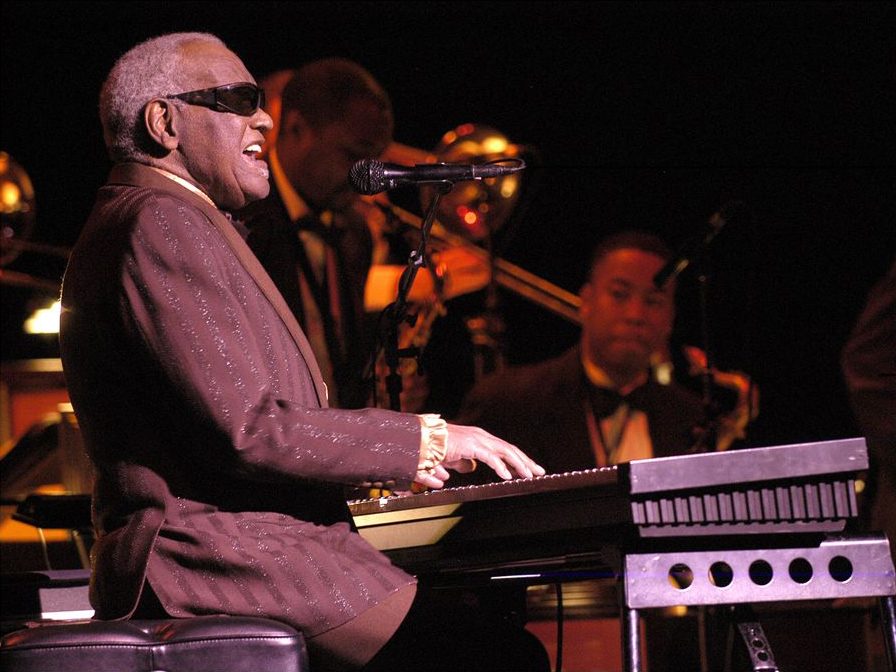Why learn how to play blues piano? Well, other than it being really, really fun, you can learn a lot from practicing the blues. The blues can be a great exercise in hand independence. You can learn so much from practicing the blues, including swing rhythm, improvisation, blues scales, and a chord progression that works across many songs. In this lesson, we’ll dig into the history of the blues, show you some exercises, and give you some blues classics to explore and play.
Table of Contents:
Love the Blues? Enter your email and you’ll get 4 FREE Play-along lessons to get you started with this amazing style.
The blues is a musical style developed by Black American descendants of enslaved people. Elements of the blues include the 12-bar song structure, the blues scale, swing rhythm, improvisation, and “blue” notes.
While blues music isn’t exactly mainstream today, it is an ancestor to many of today’s most popular music genres including jazz, RnB, rock, country, and soul. We wouldn’t have the radio music we enjoy today without the blues!
The blues as a musical style has its roots in the 1860s, around the time slavery was outlawed in the United States (the 13th Amendment was passed in December, 1865). While many people associate the blues with slavery, it is actually more reflective of the freed descendants of slaves and their experience. Themes in early blues music ranged from farming woes to stories about folk heroes standing up to discrimination.

Today, major piano players associated with the blues include Fats Domino, Ray Charles, and Jerry Lee Lewis.
The blues is a great genre to learn even if you don’t plan on becoming a blues player! Even classical players can learn a lot from practicing the blues. Here are a few reasons why this is such a great genre for beginners of all styles:
All right, listen, this is a blues riff in B. Watch me for the changes and try to keep up, okay?
Marty McFly from Back to the Future
Inspiring tutorials. Fascinating articles. Exclusive interviews. We create piano content anyone, anywhere can enjoy for free. Don’t miss out, sign up for more free lessons.
So what makes the blues, the blues? Well, there are several characteristics that most blues songs have in common.
One of the most important elements of blues music is the 12-bar blues structure. The basic form of this structure is quite consistent, though different artists may throw their own variations into it.
Here’s the general chord progression expressed in the number system:

In G major, these would be the chords:

Sometimes, the last chord will be a V chord and serve as a turnaround to repeat the form from the beginning.
> Check out: Play 12-Bar Blues Like Ray Charles
An essential component of blues music is rhythm. In blues, we swing our rhythm, which means we linger just a tad longer on beats. So, instead of counting “1 and 2 and 3 and 4 and,” you can think of it as counting “1…and 2….and 3…and 4…and.”

You can also pair your blues progression with a rock shuffle. Keeping a swinging rock shuffle going in your left hand while your right plays riffs and runs can be challenging. Which is what makes the blues such an excellent practice tool that’s also fun to play.
To add some melody to your 12-bar blues, you can experiment with notes from the major and minor blues scales.
The major blues scale has the following major scale degrees: 1, 2, ♭3,♮3, 5, 6. The flat notes are sometimes called the “blue notes.” Here’s the major blues scale in G:

But when people talk about the blues scale, most of the time they mean the minor blues scale. You can think of the minor blues scale as being built on the following minor scale degrees: 1, 3, 4, ♭5, 5, 7. That’s just the same thing as the minor pentatonic scale with an added ♭5. You can also think of the minor blues as being built on the following major scale degrees: 1, ♭3, 4, ♭5, 5, ♭7. Here is the minor blues in G:

You can play either the G major or minor blues scales on top of the G major progression we introduced above. They both work! Experiment with different combinations of major and minor scale notes to come up with blues riffs of your own.
> Master the Blues Scale on Piano
A few simple licks can make your playing even bluesier. Watch this 10-minute lesson or keep reading for some examples in G major.
The Boogie Pattern
Let’s add a touch of boogie-woogie to the progression. This is super easy: just shift the top two notes of your triad over one key. Alternating your triads like this makes for a more interesting comping pattern.
The Slide
It’s so subtle, but adding a slide to your blues riffs makes it sound way more bluesy! Here, we’re slipping in from the black key a half step down from our triad third. This is similar to grace notes in classical music, but in blues and jazz, we typically play the “grace note” with the same finger as the note we’re sliding into.
Important: Don’t slide all the time. I know it sounds cool, but it can be overdone. Keep it sparse—that’ll ensure the slide retains its coolness!
Riff 1
Now let’s start learning riffs! For this first riff, use the first inversion of a G major triad as a starting position. We’ll base a riff off this position. You can do a similar thing on the first inversion of the C major triad.
Try these riffs in different octaves of the keyboard. Explore the piano’s full range!
Riff 2
This next riff contains only three notes: D♭ (or C#), D, and G. If you play it in fast triplets, it sounds even cooler!
Why do these riffs sound so bluesy? They’re based on the blue notes of the blues scale:
Triplet Pattern
Finally, we can use that same rapid triplet pattern in Riff 2 to play bluesy fourths. Here’s what it looks like with an extra slide.
Now that you have your blues ingredients, it’s time to put your own spin on things. Play as many variations as you can think of! Here are some ideas to get you started:
Now that you have the blues basics down, try learning a few classics.
Most of us know “Hound Dog” as a 1956 Elvis Presley hit, complete with his signature dance moves. But the song, written by Jerry Leiber and Mike Stoller, was first recorded by Willie Mae “Big Mama” Thornton in 1953. And while Elvis sold millions of records, Big Mama only received a $500 check for her work.
Queen guitarist Brian May once remarked that the first rock stars weren’t guitarists, but pianists, like Little Richard and Jay Lee Lewis. “Tutti Frutti” is a truly fun song, bound to get everyone in the room up and moving. A-wop-bop-a-loo-mop-a-lop-bam-boom!
Ray Charles is one of the most famous artists associated with the blues. But his most famous song, “Hit the Road Jack,” doesn’t follow the 12-bar blues format (it follows the Andalusian cadence). “What I’d Say,” however, is a total blues song through and through.
The Beatles’ catchy hit “Can’t Buy Me Love” has a verse section that follows a slightly modified blues progression. The last line of the verse after the break goes G7 – F7 – G7 – F7 – C.
Before the arrival of Stevie Nicks, Peter Green’s Fleetwood Mac was a blues band. And while “Black Magic Woman” is closely associated with Carlos Santana, Peter Green was the original songwriter. The song follows a modified minor blues structure.
More blues piano lessons:
Subscribe to The Note for exclusive interviews, fascinating articles, and inspiring lessons delivered straight to your inbox. Unsubscribe at any time.
Kevin Castro is a graduate of the prestigious MacEwan University with a degree in Jazz and Contemporary Popular Music, and is the Musical Director and touring pianist for JUNO-winning Canadian pop star, JESSIA. As your instructor at Pianote, Kevin is able to break down seemingly complex and intimidating musical concepts into understandable and approachable skills that you can not only learn, but start applying in your own playing. Learn more about Kevin here.


By signing up you’ll also receive our ongoing free lessons and special offers. Don’t worry, we value your privacy and you can unsubscribe at any time.
We use cookies for traffic data and advertising. Cookie Policy »